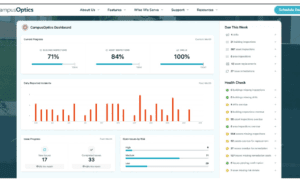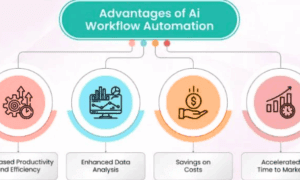The evolution from traditional processes to digital-first thinking was a need. A digital-first mindset can help any business to remain competitive, responsive, and most importantly, innovative.
However, this particular approach requires more than just adopting new technologies; it demands a transformative shift in mindset and strategy. Here’s an in-depth look at how digital-first thinking is redefining business process management solutions and the steps companies can take to make this transition effective.
Key Components of a Digital-First Strategy
Implementing a digital-first approach in business process service requires careful planning and a shift in core business processes. Here are some essential components that contribute to successful digital transformation:
-
Cloud-Based Infrastructure
Digital-first business process services require a flexible platform, and that is where the cloud comes in. It helps organizations store, manage, and process data within the cloud, which makes it relatively simple to allocate resources based on need. In particular, it provides support for conditions when professionals operate and coordinate from various locations.
-
AI and Machine Learning
The right utilization of AI and machine learning can help enterprises to get the analytical facts clear, automate processes, and deliver more personalized service. Just like chatbots for customer support, and predictive analytics for the supply chain; AI-enabled tools make processes more efficient in many ways.
-
Automation Tools
Automation is key to digital transformation in the present context. Repetitive work can also be automated in a company. This, in turn, eradicates the chances of errors being made, increases the rate of work done, and harnesses the skills of employees on more important tasks.
-
Data Integration and Interoperability
Data silos are a significant obstacle in digital-first operations. By integrating data across platforms and systems, businesses can get a holistic view of operations and customer interactions. This interoperability fosters collaboration and improves overall efficiency.
-
Cybersecurity Frameworks
Businesses should be extra cautious of cybersecurity since they are trading online. Since companies continue to incorporate digitally stored information as their primary assets, it remains crucial to protect data. Threat identification, response to threats, and planning and training the employees are so important in protecting the organization from cybersecurity threats hence the establishment of a good cybersecurity framework.
-
Employee Empowerment through Digital Tools
For a digital-first strategy to succeed, business process management needs access to tools that empower them to do their jobs effectively. Providing digital collaboration platforms, knowledge-sharing tools, and access to real-time data creates a more engaged, productive workforce.
Why Digital-First Matters in Modern Enterprise Solutions
With technology transforming at an unprecedented rate, businesses are compelled to move beyond legacy systems and outdated methods. Here are some key reasons digital-first thinking has become central to modern enterprise solutions:
-
Enhanced Agility and Speed
Companies become more agile with digital-first thinking, which allows them to respond quickly to changes and capitalize on new opportunities. Businesses can adopt such tools to streamline execution, test ideas faster, and scale without significant disruption. It always helps keep them ahead of slower-moving competitors.
-
Customer-Centric Approach
Today’s customers expect personalized and efficient experiences. Digital-first strategies let companies gather and analyze customer data efficiently. This, in turn, enables them to offer tailored interactions and services. The excellent insight-driven approach helps businesses anticipate customer needs and enhance satisfaction.
-
Operational Efficiency
Digital-first thinking boosts efficiency by automating tasks and integrating workflows. This reduces manual intervention, cuts down errors, and improves productivity. As a result, employees can focus more on strategic, value-adding tasks, while the organization saves time and resources.
-
Data-Driven Decision-Making
Digital-first organizations are equipped to leverage data more effectively. With analytics and AI, they can make informed, timely decisions that improve outcomes and reduce risk. This approach also strengthens planning and forecasting, allowing for smarter business strategies.
-
Future-Proofing the Business
A digital-first approach prepares companies to be resilient in an unpredictable market. Businesses can focus on scalable, flexible solutions to better adapt to evolving market demands, regulations, and customer expectations, which ensures long-term stability.
Bottom Line
Leveraging digital-first thinking is not an option anymore. It has become a way to stay ahead, cost-effective, and customer-oriented for businesses. Resources like cloud, Artificial Intelligence, automation, and data integration can help companies respond to market demands and needs, optimize their decisions and operations, and supply more individual services or products to customers. But that merely means that it goes beyond technology and is an overhaul of organizational culture when it comes to employee enablement, collaboration, and security. In adapting to these changes, the business places their organizations for efficiency and effectiveness in the present and the future in the evolving digital environment. A good digital first plan is a first step for every organization in building a digital defense and preparing for what is to come while staying ahead of it.
As more companies embrace this revolutionary model, a digital-first approach ensures that any organization is always proactively shaping its tomorrow as opposed to reacting to it. Organisations are assured of their market standing hence making efficient and effective operations coupled with better customer satisfaction and revenue reinvention through the right approach, techniques, and attitude in today’s business environment.



































